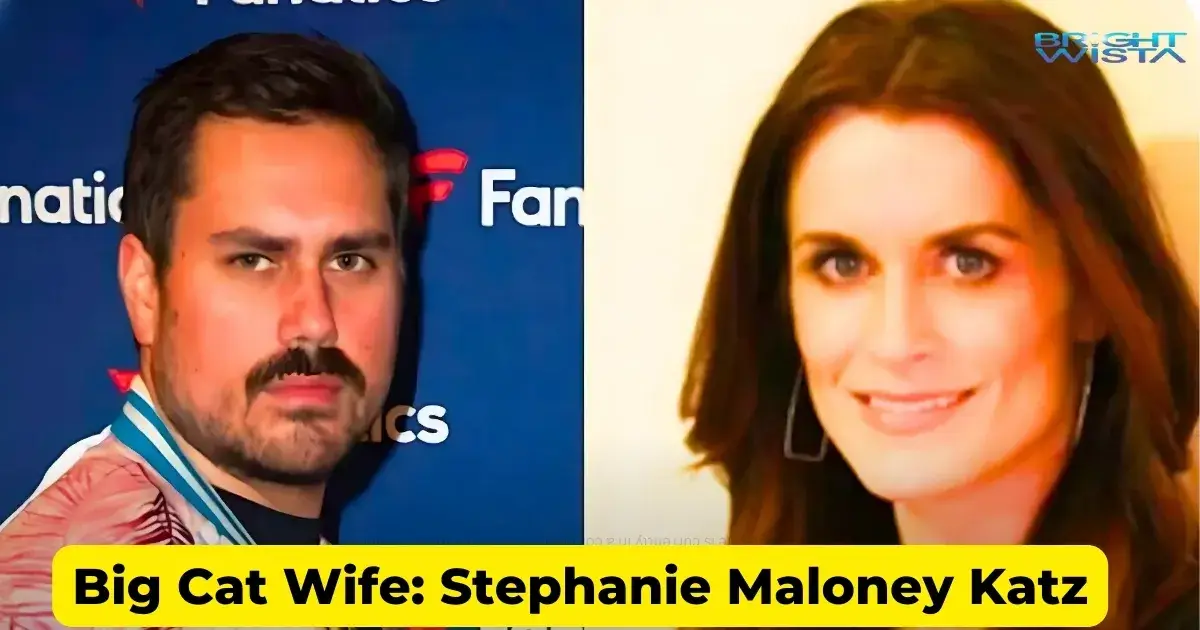Ever wondered about the lives behind the headlines, the silent partners whose dedication fuels the roaring success of big cat conservation? The wives of these conservation heroes are not merely bystanders; they are often the backbone, the strategists, and the unsung champions in a relentless battle to protect these magnificent creatures.
The world sees the charismatic faces of conservationists, the brave men and women venturing into the wild, leading research, and advocating for policy changes. But behind every successful individual, there is often a network of support, a partner who shoulders the burden, provides stability, and shares the unwavering commitment to the cause. In the realm of big cat conservation, this often translates to the wives of these individuals, women who navigate the challenges of demanding careers, extended absences, and the emotional toll of witnessing the threats facing these iconic animals.
Consider the case of Dr. Alan Rabinowitz, a legendary figure in jaguar conservation. While Dr. Rabinowitz dedicated his life to traversing the jungles of Central and South America, his wife, Salisa Rabinowitz, played a crucial role in supporting his work. She managed the home front, raised their children, and provided a stable foundation that allowed him to pursue his passion relentlessly. Her understanding and unwavering belief in his mission were essential to his success. In countless ways she enabled his work, giving him the peace of mind to focus on big cat conservation. His passing left a void, but her role in the family cannot be overstated. Without her, he may not have achieved the same goals and reach in the conservation world.
- Stream Telugu Movies Online Zee5 Aha More Alternatives
- Watch Movierulz Kannada 2024 Latest Movies Updates
| Salisa Rabinowitz: Bio Data | |
|---|---|
| Full Name | Salisa Rabinowitz (née Swartz) |
| Born | Information Unavailable |
| Nationality | American |
| Spouse | Late Dr. Alan Rabinowitz (married 1997) |
| Children | Two children with Dr. Alan Rabinowitz |
| Education | Information Unavailable |
| Career & Professional Information | |
| Profession | Details unavailable, but understood to be a supportive partner and homemaker, enabling Dr. Rabinowitz's work. |
| Role in Conservation | Indirectly involved through supporting her husband's work in big cat conservation. Provided a stable home environment, raised their children, and offered emotional support. |
| Organizations Supported | Panthera Corporation (through support of her husband's work) |
| Key Contributions | Enabling Dr. Alan Rabinowitz to dedicate his time and energy to big cat conservation by managing family responsibilities and providing unwavering support. |
| Legacy | Her support played a significant role in the success of Dr. Rabinowitz's conservation efforts, contributing to the protection of jaguars and other big cat species. |
| Reference Link: Panthera Corporation |
The commitment demanded by conservation extends far beyond the field. It permeates every aspect of life, often requiring sacrifices and compromises from the entire family. The wives of conservationists frequently find themselves managing households single-handedly for extended periods, handling finances, and navigating the complexities of raising children while their partners are immersed in research or fieldwork. This behind-the-scenes support is crucial for maintaining stability and allowing conservationists to focus on their demanding work. The emotional toll is significant, with constant worry about the dangers their partners face in remote and often hazardous environments. Yet, they persevere, driven by a shared passion for protecting these magnificent creatures.
Consider the logistics involved. While a conservationist might be tracking lions in the African savanna, their wife might be coordinating international travel for research teams, securing funding for projects, or liaising with local communities. These are not glamorous tasks, but they are essential for ensuring the smooth operation of conservation initiatives. Their communication skills, organizational abilities, and dedication are invaluable assets to the conservation effort.
Beyond the practical support, the wives of conservationists often serve as sounding boards, confidantes, and advisors. They provide a fresh perspective on challenges, offer emotional support during setbacks, and celebrate successes. Their insights can be invaluable in shaping conservation strategies and navigating complex political landscapes. They are often the unsung strategists, the quiet voices of reason behind the bold initiatives.
- Watch Ullu On Movierulzcom Stream Amp Download
- Unlock The Secrets Exploring The 4 Movie Rules For Better Films
Take, for instance, the wife of a renowned tiger conservationist working in India. She might be actively involved in community outreach programs, educating local villagers about the importance of tiger conservation and promoting sustainable livelihoods. This work is crucial for fostering coexistence between humans and wildlife, and it requires a deep understanding of local cultures and customs. Her ability to build relationships and bridge divides can be instrumental in reducing human-wildlife conflict and ensuring the long-term survival of tigers.
The challenges faced by these women are multifaceted. They must balance their own personal aspirations with the demands of their partner's career. They often face the isolation of living in remote areas, away from family and friends. They must navigate cultural differences and language barriers. And they must cope with the constant threat of danger to their partners, who are often working in areas with political instability, poaching threats, and dangerous wildlife. The dedication, resilience, and strength required to navigate these challenges are truly remarkable.
Moreover, the wives of conservationists often become advocates in their own right. They use their platforms to raise awareness about the plight of big cats, to educate the public about the importance of conservation, and to inspire others to take action. They may write articles, give presentations, or participate in fundraising events. Their personal stories and passionate advocacy can be incredibly powerful in galvanizing support for conservation efforts. They understand that the future of these magnificent creatures depends not only on the work of scientists and researchers but also on the collective will of society.
The impact of their work is often felt far beyond the immediate family. By supporting their partners, they contribute to the success of conservation initiatives that protect entire ecosystems, preserve biodiversity, and benefit local communities. Their dedication helps to ensure that future generations will have the opportunity to marvel at the beauty and majesty of big cats in their natural habitats. They are the unsung heroes of conservation, the silent partners whose unwavering commitment makes a world of difference.
It is time to recognize and celebrate the contributions of these remarkable women. Their stories deserve to be told, their efforts deserve to be acknowledged, and their sacrifices deserve to be honored. By shining a light on their roles, we can inspire others to support conservation and to appreciate the importance of partnership in achieving meaningful change. The wives of big cat conservationists are not just partners; they are essential allies in the fight to protect these iconic animals for generations to come. They are women of strength, resilience, and unwavering dedication, and their contributions are invaluable.
Consider also the impact on their own careers. Some may have had to put their own professional ambitions on hold to support their partner’s demanding work. Others have found ways to integrate their skills and expertise into the conservation effort, becoming active participants in research, education, or advocacy. Their ability to adapt and thrive in challenging circumstances is a testament to their resourcefulness and determination. They are not simply living in the shadow of their partners; they are forging their own paths, making their own contributions, and leaving their own legacies.
In some cases, the wives of conservationists have become leading figures in their own right. They have established their own organizations, launched innovative programs, and become recognized experts in their fields. Their passion for conservation is contagious, and they inspire others to join the cause. They are role models for women and girls around the world, demonstrating that it is possible to balance personal and professional aspirations while making a meaningful difference in the world. They are the embodiment of strength, resilience, and unwavering commitment.
Furthermore, the wives of conservationists often play a crucial role in bridging the gap between science and policy. They understand the complexities of conservation issues, and they are able to communicate these issues effectively to policymakers and the public. They can translate scientific jargon into plain language, making it easier for people to understand the importance of conservation and the need for action. They are skilled communicators, persuasive advocates, and effective lobbyists. Their voices are essential in shaping conservation policy and ensuring that it is based on sound science.
Their influence also extends to the realm of fundraising and philanthropy. They are often instrumental in securing funding for conservation projects, cultivating relationships with donors, and organizing fundraising events. They are adept at telling compelling stories that resonate with potential supporters and inspire them to give generously. They understand that conservation requires significant financial resources, and they are tireless in their efforts to raise the funds needed to protect big cats and their habitats. They are the driving force behind many successful fundraising campaigns, and their efforts are essential for ensuring the long-term sustainability of conservation initiatives.
In addition to their practical contributions, the wives of conservationists also provide emotional support and encouragement to their partners during challenging times. Conservation work can be emotionally draining, as it often involves witnessing the destruction of natural habitats, the poaching of wildlife, and the suffering of animals. Conservationists need a strong support system to cope with these challenges and to maintain their motivation. Their wives provide that support, offering a listening ear, a shoulder to cry on, and a constant reminder of the importance of their work. They are the emotional anchors that keep conservationists grounded and focused on their goals.
The challenges they face are not limited to their personal lives. They also often face discrimination and prejudice in the male-dominated field of conservation. They may be overlooked for opportunities, their contributions may be undervalued, and their voices may be silenced. However, they persevere, driven by their passion for conservation and their determination to make a difference. They challenge the status quo, break down barriers, and pave the way for future generations of women in conservation. They are pioneers, leaders, and role models.
Ultimately, the success of big cat conservation depends on the collective efforts of many individuals and organizations. But the wives of conservationists play a particularly important role, providing the support, stability, and inspiration that is essential for achieving meaningful change. Their contributions are often overlooked, but they are no less valuable. It is time to recognize and celebrate their achievements and to acknowledge the important role they play in protecting these magnificent creatures for future generations. These women, often out of the public eye, are the strong threads woven into the very fabric of successful conservation efforts. Without them, the tapestry would be incomplete, and the future of big cats would be far less secure.
Looking ahead, it's crucial to foster a greater understanding and appreciation for the multifaceted roles these women play. Conservation organizations should actively seek to involve them in their work, providing opportunities for them to contribute their skills and expertise. Policymakers should recognize the importance of supporting families in conservation and providing resources for their well-being. And the public should be educated about the contributions of these remarkable women, ensuring that their stories are told and their efforts are celebrated. By working together, we can create a more supportive and inclusive environment for conservationists and their families, ensuring the long-term success of our efforts to protect big cats and their habitats. This is a shared responsibility, and it requires a commitment from all stakeholders.
Moreover, it's important to acknowledge the diversity of experiences among the wives of conservationists. Some may be actively involved in conservation work themselves, while others may focus on supporting their partners from behind the scenes. Some may come from privileged backgrounds, while others may have overcome significant challenges to achieve their goals. Some may be married to famous conservationists, while others may be supporting lesser-known individuals. It's crucial to avoid generalizations and to recognize the unique contributions of each individual woman. Their stories are diverse, their challenges are varied, and their contributions are invaluable.
The legacy of these women will extend far beyond their own lifetimes. Their support for conservation will help to ensure that future generations will have the opportunity to experience the wonder and awe of seeing big cats in their natural habitats. Their advocacy will inspire others to take action to protect the environment. And their stories will serve as a reminder of the importance of partnership, resilience, and unwavering commitment in achieving meaningful change. They are the unsung heroes of conservation, and their contributions will be felt for generations to come. Their impact is immeasurable, and their legacy will endure.
In conclusion, while the focus often remains on the front-line conservationists, it's imperative to acknowledge and celebrate the vital role played by their wives. They are the silent partners, the unsung heroes, and the unwavering champions of big cat conservation. Their contributions are essential for the success of conservation efforts, and their stories deserve to be told. Let us remember their dedication, honor their sacrifices, and celebrate their achievements. The future of big cats depends on it.



Detail Author:
- Name : Dr. Brenden Trantow
- Username : gleichner.jaron
- Email : prince.kiehn@yahoo.com
- Birthdate : 1996-07-21
- Address : 891 Sterling Well Suite 750 East Damaris, AR 52323
- Phone : 918.833.8159
- Company : Senger, Harvey and Abernathy
- Job : Movie Director oR Theatre Director
- Bio : Sed eveniet dolores et autem. Aut dicta nihil qui aut quae molestiae dolorem dignissimos. Possimus adipisci et vel dicta rerum temporibus.
Socials
tiktok:
- url : https://tiktok.com/@georgette_conn
- username : georgette_conn
- bio : Ut rerum modi et magni aut molestiae. Earum nulla amet optio doloremque ut.
- followers : 4569
- following : 1126
facebook:
- url : https://facebook.com/georgette_conn
- username : georgette_conn
- bio : Itaque molestias sint et est aspernatur inventore exercitationem sint.
- followers : 2474
- following : 495